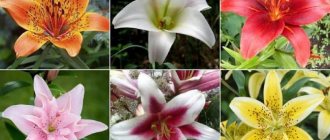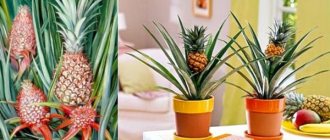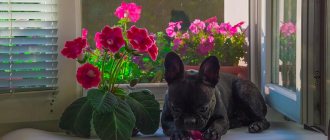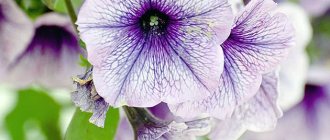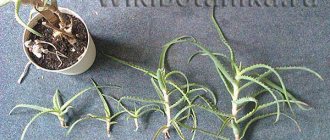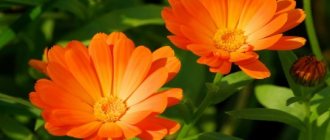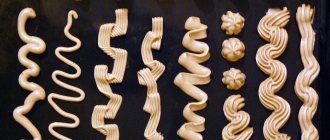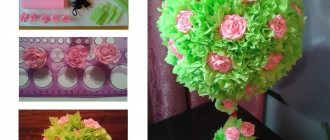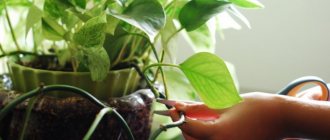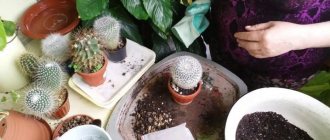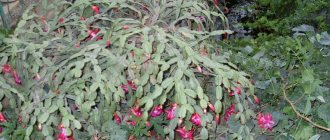Master class on filling a florarium from a florist - Alexandra Matyukha
Recently, it has become very popular to plant succulents and cacti in glass vases - florariums. Nowadays, you can easily purchase a variety of geometric containers in online stores, and even florariums with ready-made compositions. There is also a more economical option - find a suitable glass vessel at home and fill it according to your taste and desire. Succulents grow well in florariums, this is due to the protection of the plant from drafts and temperature changes.
You can get acquainted with Alexander’s amazing works using this link in his VK group. There are geometric and hanging florariums of different sizes and shapes.
Especially for our readers, we have prepared a master class from Alexander Matyukha. Alexander is a teacher of botany and part-time creator of beautiful florariums. It is a very labor-intensive process to make a whole work of art out of glass and alloys! Alexander has his own workshop, where he makes and fills glass vases. He kindly shared with us the secrets of filling florariums at home.
And so, for your own purposes, you can use a purchased vase, or find something suitable at home, in size and shape, and read about what to do next in our article:
- Master class, step-by-step instructions with photos:
- – What do we need to fill the florarium?
- – Which substrate is suitable?
- – How to properly plant a plant in a glass vase?
- – How can you decorate a florarium?
- – Recommendations for caring for plants in florariums
Florarium according to all the rules on Supersadovnik.ru
The cost of a finished florarium reaches 20 thousand or more. At the same time, a glass vessel can be purchased at a price from 500 to 5000 rubles, depending on the size. Prices for plants, soil and stones are even lower, and besides, making a florarium with your own hands is an exciting leisure activity and pleasant emotions.
A glass container with live plants and decorative elements looks unusual and stylish. Nowadays, all kinds of mini-florariums are in fashion, which can be easily placed on the coffee table, next to the computer. In small volumes, from 1 to 3 plants are used, less often 5 crops.
Large florariums are often used to decorate offices or restaurants: huge display cases or aquariums with plants look very impressive. They can accommodate a large number of species, using them to create an imitation of a real tropical forest. But such ecosystems need to be specially regulated using temperature and humidity sensors.
They are equipped with automatic watering systems and additional lighting.
What kind of florariums are there?
Florariums can be closed or open, tabletop, floor or wall. But the main thing is wet tropical or dry succulent.
Closed florariums
a complex version of florariums, since an ecosystem with its own microclimate is created inside the container. Once the plants are planted, the container closes tightly and no further maintenance is required. Such mini-ecosystems are difficult to calculate correctly, and, as a rule, they are short-lived.
Open florariums
A simpler version of florariums, this is what we will consider in more detail.
Separately, you can also distinguish orchidariums (compositions with orchids) and florariums with bonsai .
How to make a florarium with your own hands?
To make your own florarium you will need:
Transparent container, glass or plastic
You can buy a ready-made one or look for it at home and adapt what you have on hand - jars, glasses, bottles, teapots and vases. Ready-made florariums can be found in almost any shape - cube, sphere, hemisphere, cone, cylinder, dome, but geometric florariums are the most popular.
For tropical florariums and orchidariums, containers with a small hole that create high air humidity are more suitable.
For succulents, you need to use containers with a wider mouth as they prefer low humidity levels.
Drainage
Expanded clay (with a fraction of less than 5 mm), pebbles or sand. Its layer should be larger than in a regular pot, at least 4 cm. In ready-made closed florariums, a double bottom is often used to remove excess water.
Florariums are very beautiful, where differently colored colored sand is used as a drainage layer.
Unfortunately, sand tends to mix up when watering, so in this case, try to plant the plants in the center of the container and water very carefully. This allows you to extend the decorative effect of the “layer cake” longer.
Plant substrate
Succulents will need a light sand mixture, orchids will need a special soil based on tree bark, the rest will need regular ready-made soil with the addition of perlite and vermiculite (30% of the total amount of soil).
It is better not to overdo it with fertilizers, use half doses. Plants that quickly begin to grow will spoil the appearance of the florarium.
Plants for florarium
Even a beginner who has never kept indoor plants before can master a florarium made from succulents, but creating a tropical forest will require a more serious approach and some knowledge.
Decorative elements
„Mosses. Most often they use sphagnum or mosses of various types, which can be found in a pet store or aquarium department. They can only be used in tropical florariums.
Colored glass. „
Stones, shells.
Natural materials: twigs, driftwood, dried flowers. Their use gives the composition a feeling of naturalness.
Decorative figures. They allow you to create a special or some small plot.
What plants can be planted in a florarium?
When selecting compositions, they carefully study not only the decorative characteristics, but also the plant preferences for soil, requirements for lighting, humidity and care: the “neighbors” in the florarium must have all the same parameters.
The main rule when choosing a plant is that it should be dwarf and have a very slow growth rate.
Plants for a tropical florarium
- Ferns: maidenhair, or lady's hair; asplenium; multi-row; pteris;
- trees: ficus microcarpa, myrsina, Japanese maple, pomegranate, etc.;
- tillandsias, now very popular tillandsias from the atmospheric group are used for planting together with succulents, while the remaining species are more suitable for tropical florariums;
- orchids: miniature phalaenopsis, hybrids of phalaenopsis and Kinga dendrobiums, ludisia, paphiopedilum;
- ivy, varieties with small leaves and low growth rate);
- hypocyrta;
- hypoesthes;
- fittonia;
- cryptanthus , or earth star;
- Pilea;
- selaginella;
- soleirolia (for ground cover in large florariums).
Plants for succulent florarium
There will be enough space in the florarium for succulents for about 1.5–2 years. If one of the succulents grows too much, it can be transplanted into a separate pot and a smaller succulent can be planted in the florarium instead.
Suitable for planting:
- adenium;
- echeveria (echeveria) and its relatives;
- slipway;
- aloe: miniature species, like a. aristata or a. brindle;
- gasteria;
- haworthia;
- living stones , or lithops;
- small cacti: astrophytums, gymnocalyciums, mammillaria, etc.);
- aichrizon (can be formed in the form of a tree);
- Crassula;
- aeonium (small specimens).
The procedure for creating a florarium
1 . Place a layer of drainage and light soil on the bottom and plant an accent plant.
2. Plant the remaining plants and mulch the soil with decorative pebbles, shells, etc. of your choice.
3. Gently pour from a watering can with a long, narrow neck. And your florarium is ready!
The most common mistakes when creating a florarium
1. Planting plants too densely leads to the fact that the florarium quickly loses its decorativeness and structure.
2. Mixing in one florarium crops that require different growing conditions.
3. Too little drainage layer leads to the root system of plants getting wet.
4. Excessive number of decorative elements.
5. Use of large and fast-growing crops, such as anthuriums or philodendrons, in a small florarium.
6. The use of vessels is too complicated in shape. Thus, a highly curved surface reflects light well and makes it more difficult to remove dust and dirt from the inner walls.
7. Use of glass or colored glass, as well as containers made of matte-colored plastics. They distort the light spectrum and disrupt plant physiology.
Caring for the finished florarium
Caring for a florarium depends on the plants that live in it. Here are some simple rules:
- Choose a bright place for the florarium, close to the window, so that the plants are not exposed to direct rays of the sun. In winter, move the garden closer to the window.
- Water the florarium moderately.
- Monitor the humidity inside it. If necessary, especially in hot weather, spray the plants as the moss dries.
- Periodically wipe the glass with a damp paper towel.
Florarium for a month
If the florarium includes bulbous crops (hyacinths, daffodils, tulips, scylla, etc.) or any other seasonal flowers, then this is just a beautiful version of the bouquet - a seasonal florarium that will delight you for no more than a month. After flowering, the bulbs can be dried and planted in the garden.
Source: https://www.supersadovnik.ru/text/florarium-po-vsem-pravilam-1006535
Master class, step-by-step instructions with photos:
– What do we need to fill the florarium?
– To fill the florarium you will need plants, substrate and drainage. Read about which succulents are best. Usually succulents or, conversely, moisture-loving plants are planted. For the latter, florariums with a lid are more suitable, inside which optimal air humidity will be constantly maintained. It is also worth considering that such plants need a larger container than succulents, and the substrate must be sufficiently nutritious.
Florariums of various sizes and volumes are suitable for succulents, since they grow quite slowly and thrive on poor substrates - sand and gravel.
Due to their unpretentiousness, succulents are more popular, so using their example it is worth talking about planting plants in a florarium.
An extremely important component of the florarium is drainage . It sounds great for sealed containers, but the problem of water stagnation must be solved. This can be done using various hygroscopic materials; fine expanded clay and hydrogel can be used. It is also necessary to use activated carbon, which is used in filter columns and aquarium filters. Coal for a long time prevents the walls of the florarium from “blooming” - the development of algae.
– Which substrate is suitable?
– As already mentioned, gravel and sand-gravel culture are excellent for growing succulents. Both sand and gravel can be purchased in a store, or collected with your own hands on the seashore (especially when it is nearby)
The collected material must be processed ; it is best to heat it in an old unnecessary frying pan or baking sheet in the oven. Purchased materials can be simply washed.
Purchased materials can be painted or unpainted, quarried or otherwise mined - to suit every taste.
Substrate for filling the florarium - sand, drainage, hydrogel, activated carbon
Colored pebbles, pebbles and gravel
Shells for decoration
– What plants are suitable for a florarium?
– Small cacti, haworthias, echeverias, lithops, sedums and crassulas get along well in glass.
– How to properly plant a plant in a glass vase?
– Planting is carried out in several stages:
- First you need to thoroughly wipe and polish the vase itself using a glass cleaner. If we are talking about a florarium made using the Tiffany technique, then take care of the platinum at the seams, try not to chip or scratch it.
Advice: work with latex gloves, otherwise when you wipe one edge, you will definitely leave marks on the next one.
- Before planting, prepare everything you need: remove the plants from the technical pots and rinse the roots in warm water , select the substrate in accordance with your plan - everything should be at hand.
- First, you need to pour a sand cushion on the bottom (so that large gravel and expanded clay do not leave deep scratches on the bottom edge). Place expanded clay in the center, add hydrogel and activated carbon. Line the side edges with gravel. Place the plants in the resulting “bowl” and fill the gaps with gravel.
– How can you decorate a florarium?
“Everyone has different tastes, I prefer natural, natural materials in natural colors and shades. Sometimes customers contact me who want to decorate a vase in a certain color scheme. Such experiments also turn out to be very interesting.”
Succulents for the garden in a jar
Succulents are the most popular when creating florariums, and for good reason. They are usually easy to care for, small in size, do not grow too quickly, and look exotic and different. Moreover, even one type of succulent can differ significantly in appearance, be of different shapes and have different colors of “leaves”, different flowers, etc. Just keep in mind that they do not like high humidity, so when choosing a vase, choose one with a wide neck. And one more thing: they will need to be watered very rarely, and so that not the entire layer of soil/sand gets wet. It will be necessary to make a thick drainage layer, and use coarse sand with the addition of soil as soil.
Try making your first florarium from succulents and cacti
Haworthia
Does not bloom, but has decoratively colored lancet leaves. Undemanding to temperature and humidity conditions. Can be used in combination with more demanding plants. It does not like wet soil too much and can rot if moisture gets into the sockets.
Easy to care for Haworthia succulents
Aptenia
Flowering plant, small bright pink, lilac, white flowers. The leaves are fleshy and small. It is not too demanding on growing conditions and tolerates both high and low humidity.
Aptenia can be successfully grown in a vase
Monanthes
There is Monanthes in the form of a very small shrub, and there is a herbaceous one. Can create cushion-like dense clumps. The stems are erect with a leafy rosette at the top. Some species are in bloom. It is not too picky about temperature, does not like high humidity, but needs good lighting. A period of rest with a decrease in temperature in winter is desirable.
Small-sized plants are suitable for the smallest florariums
Piaranthus
It has a very unusual shape - the stems are creeping and consist of segments. Each segment has several “teeth”
Combined with its unusual coloring - various shades of green and brownish-green, and the star-shaped flowers - this plant will attract attention. Can be the center of a composition
The care requirements are low; you should only protect them from direct sunlight in the summer.
Unusual bright flowers and strange stems
Argyroderma
The very unusual shape of the plant, combined with the silvery tint of the leaves, gave rise to their popular name - living stones. The shape of the leaves resembles small pebbles (usually no more than 2 cm), from which a large and bright flower grows. It is generally undemanding in terms of conditions.
Flowering stones are an interesting addition to a glass garden
Conophytum
This type of succulent is also called living rock. The shapes of the leaves are even more strange and unusual. The flowers are very similar to daisies - bright and large. They have a clear growing season and dormancy. Vegetation usually occurs in winter, dormancy occurs in the summer months.
The shapes of the leaves are the most unusual. And these plants live on Earth?
Echeveria
This type of succulent is also called stone rose. Care is simple, just don’t touch the leaves with your hands. They are covered with a thin coating that wears off when touched. But since the florarium is an almost closed container, the likelihood of plaque damage is low. Another feature is that a rest period with a temperature of about 15°C is required.
The stone rose is not that unusual, but it looks great on rocks and sand.
Lithops
Lithops also look like stones that suddenly bloomed. They differ in that they can change the color of the leaves to match the color of the soil. They grow very well on rocky soil and can withstand high temperatures. They are similar in care to cacti, so they can be combined. They grow slowly and require bright light for normal development.
Another plant from another world
These are not all succulents and there are also no less interesting ones, but even these are enough to create a couple of thousand different compositions.
Florarium concept
A florarium, or, otherwise, a “garden in a bottle” is an independent ecosystem that exists in a terrarium or a transparent plastic container.
Florariums come in the most incredible geometric shapes and sizes ; mini florariums are very popular, as well as an incredible closed system - a closed florarium that does not require human intervention at all.
Selecting flowers for a florarium will not be difficult. The main thing is to choose plants with similar living conditions . In an apartment, such an eco-terrarium with plants can be a breath of fresh air, literally and figuratively.
Popular compositions
Decorating a garden in glass is real creativity at its best. Currently, both a mixture of styles and separate categories of florariums are popular. Let's look at the main ones.
- Desert theme. A composition of small cacti will decorate a small windowsill or office interior. The style basis here is sand, which can be combined with stones and pebbles. They will look beautiful and make you look younger.
- Forest florarium. In such a composition it is important to design the tiers. In the background you need to place taller plants, and in the front - low ones (cacti, ivy, mosses). The set of succulents is perfectly accented by decorative ferns. In this style, it’s a good idea to add small artificial flowers or mushrooms.
- Stone geometry. Sharper forms of florariums can be emphasized with strict geometric shapes. To do this, select certain plants, for example, agave with clear lanceolate leaves. You can put large stones in such a terrarium.
Ceramic garden figurines of the smallest sizes are often added to florariums. They look appropriate with the dark greenery of the garden in a bottle and slightly dilute the cold composition.
Types of florariums
The idea of keeping plants in a closed container with transparent walls is not new. This method of growing tropical plants, which were not suitable for the colder climate of England, was practiced by Nathaniel Ward back in the 18th century.
The creation of a closed space was dictated by practical necessity - heat-loving plants simply did not survive in the harsh climate, and it was necessary to experiment with the conditions of detention in order to conduct research activities.
But soon indoor gardens became decorations for fashionable salons and rich houses - having a florarium with an orchid was considered chic.
Today, a florarium is not just a box. There are many different forms of mini cactus gardens. In general they can be divided into:
- They are open
- Closed . A closed ecosystem isolated from the outside world.
Open florariums differ in geometry and size, while closed ones are most often small.
In addition to two types, florariums can be:
- wall, hanging and tabletop;
- with and without backlight;
- florarium with imitation water;
- florarium bonsai;
- very large and very tiny.
We create a florarium with our own hands
There are a lot of options on how to make a florarium yourself, especially since you can even find ready-made drawings with dimensions and step-by-step instructions on the Internet.
But the easiest way is to use ready-made aquariums or other glass containers that originally had a different purpose.
In an aquarium or round vessel
One of the simplest solutions is to set up a florarium in an old aquarium , which you probably have at home or with friends.
You can also purchase a new tank, especially if you want a container with an unusual shape, but a former fish house is also a good place to start.
The advantages of such a florarium:
- Small size (to begin with, you shouldn’t take a container larger than 10 liters).
- It can accommodate not only small plants, but also quite large specimens.
- The dimensions of the container allow you to care for each plant and carry out drip watering with a pipette or syringe.
In a large tall jar (for beginners)
The option with a large glass jar is more profitable than the option with an aquarium (you don’t have to spend money on buying a container). A three-liter jar can be found in any home, and as a test option it is optimal.
Semi-desert succulent in a candy bowl
Old candy vases can be a great solution if you rethink their purpose. They initially have an unusual shape, and a beautiful multi-colored sand base and a small group of succulents will become a bright spot in any interior.
Geometric garden
Vessels with complex geometric shapes have become trendy containers for cacti. Of course, to assemble such a container yourself, you will have to tinker (dimensions, drawings, processing and gluing of parts), but the result will be impressive.
Another option for placing a geometric garden is chemical glassware, the main thing is that its dimensions allow it to be placed inside the plant.
A little theory: conditions for keeping succulents
In the article “Succulents: Tips for Beginning Flower Gardeners,” we have already mentioned how extensive the list of home succulents is – it is huge! It includes inhabitants of the desert, representatives of the tropics, and inhabitants of the continental steppes. It is clear that it is simply impossible to provide accurate content data suitable for all species. But there are general principles of care for the group of succulent plants.
- Lighting. The more light the better! But remember: not all varieties like direct sunlight.
- Watering. Twice a month - in summer, once - in winter.
- Priming. The mixture for compositions must contain peat, coarse sand, porous minerals (for example, zeolite) and vermiculite - they will increase breathability and make the soil quite light.
- Drainage. The quantity and quality of drainage is of great importance. The speed of plant growth depends on the thickness of the drainage layer. That is, the more drainage, the slower the succulent grows. This remark especially applies to rosette species.
Tools and Supplies
Before you start creating a mini-greenhouse, make sure you have all the necessary tools and materials. This:
- drainage (coarse sand, decorative stones, expanded clay, pebbles, broken brick, activated carbon). The container used does not have holes for water to escape. If moisture accumulates, the roots will die;
- soil (ground). Selected individually depending on the type of plant. For cacti and succulents, fine sand and peat in a ratio of 1:2 are sufficient; for moisture-loving crops, add soil, perlite, and vermeculite in equal parts. To maintain the required acidity of the soil, flour is added. But it’s easier to buy a ready-made mixture at a flower shop, which is ideal for the selected plants. It is prohibited to add nitrogen fertilizers; this will significantly enhance crop growth;
- tools for work (gloves, tweezers, a spatula or a set of mini garden tools, a special mini bottle for watering or a syringe, skewers for fixing the decor, a wine stopper for compacting the soil);
- decorative elements (use your imagination here).
- Almost everything you need for work can be found in the forest. Take a walk and save money at the same time.
Mini-garden of succulents: parameters for selecting plants
Before you create a composition yourself, study the basic information about varieties and types. What will the planted plants look like when they are mature? How fast do they grow? Do they require dry wintering? This is what should interest us first of all.
- Origin. It is desirable that all plant elements of the future ensemble be as compatible as possible in terms of climatic indicators. It will be very difficult for an inexperienced gardener to maintain a group of cacti and aeoniums in perfect order - each has its own ecosystem.
- Size and shape. Knowledge of morphological data (structure, shape, growth rate) is our main assistant. For example, plants with a constantly growing rosette cannot be planted close to each other. And, conversely, for varieties that branch with small fragments, dense planting is indicated.
- Color. The principle of color compatibility is a creative component of any process. Here, as they say, “there is no friend according to taste” - everyone has their own vision.
- Decor. Which elements you prefer is also a matter of taste. But when choosing the same decorative sand, be guided by compatibility considerations - not all sand is suitable for succulent species.
Plant selection
Succulents that are suitable for florariums are very diverse both in appearance and in their structure. Their choice depends on the taste and preference of the manufacturer. The recommended list includes such plants.
- Cacti. These desert inhabitants look simply wonderful in a closed transparent container along with other plants. Their greenery and thorns begin to play with new colors, and the appearance of the florarium becomes elegant and stylistic. Cacti grow slowly and live well in conditions of infrequent watering, which makes them simply irreplaceable inhabitants of a plant terrarium.
- Rejuvenating, or “stone rose”. This plant has interesting leaves that gather in rosettes that resemble rose petals. Rejuvenated is undemanding to care, pleases with a variety of shapes and colors of leaves. Therefore, its proximity to cacti and other plants in the florarium will look very organic.
- Agave. The sharp leaves collected in rosettes of this succulent are visually associated with the Mexican prairies. The color of lanceolate shoots can be different: from plain grayish-green to emerald. Sometimes the leaf is emphasized by a yellowish border.
- Echeveria. This plant has fleshy shoots of a dark green color. In simple pots it looks rather inconspicuous, but it can easily reveal its beauty in a florarium. The gray pubescence of the leaves looks delicate, like a coating of frost on the shoots. It will go well with ferns and lichens.
- Aloe. This succulent can be more compact than the usual huge bushes in pots on our grandmothers’ windowsills. The fleshy, spiny leaves of this plant look great under glass. There are species whose shoots resemble geometric shapes, and there are also simpler specimens. All varieties of aloe are equally unpretentious, which is a huge plus for use in florariums.
- Haworthia. Externally, many people confuse this succulent with agave. Indeed, the shape of the bush is rosette, and the leaves are elongated and lanceolate. If we talk about the most common classic haworthia, it is distinguished by a denser and more compact shoot structure, as well as warty light stripes on the leaves. Haworthia looks great in florariums and has a big advantage - it grows slowly and does not require serious care.
- Adromiscus. This plant has perhaps the most interesting leaves of any succulent. Different varieties can attract attention with shoots in the shape of a club, triangles, clams - depending on your imagination. Therefore, everyone can choose this plant to suit their taste. The leaves are collected in small dense rosettes.
- Kalanchoe. This is not a rosette succulent. Usually all Kalanchoes form bushes, which will make the composition with them in the florarium complete in appearance. Specimens with decorative leaves are interesting in color. The numerous babies that Kalanchoe produces also look very cute.
- Ragwort. The most popular type of this plant is Senecio Rowley. It resembles a thread with beads that lie beautifully on the ground. A very interesting succulent, undemanding in care.
- Malefor. This succulent is often used in dry flower beds, as it amazes with its vigorous flowering. But it will also look original in florariums. Its leaves are small, strewing a long creeping shoot. The bluish bloom will effectively set off ferns and lichen.
- Crassulas. For example, the notorious money tree or milkweed look great together with cacti and other succulent plants. The fleshy leaves of Crassula with a rich green hue will brighten up any garden in a bottle.
A florarium is interesting when there is a play of contrasts in it.
Prickly and smooth, covered with bloom and bright green - all this variety can be embodied in a terrarium for plants. You can include more than just one type of plant in the composition. Allocasia, fetonia, mosses and mini-ferns will go well with succulents.
The easiest way to plant when creating a composition
The first thing that novice amateurs should pay attention to is the method of planting. The simplest and most reliable option at home can be considered the creation of a living composition based on seedlings, planted by type in separate containers-cups.
The advantages of this technology are obvious:
- The succulent is planted in a pot together with its “native” soil - there is no need to select a mixture that is equally suitable for all components of the future composition.
- When transplanted, the plant is not exposed to stress, which invariably accompanies any flower when the soil is changed.
- By rearranging the cups, you can easily find the appropriate location.
- It’s easier to choose exactly those specimens that are well arranged in color, shape and size.
Glass, ceramics, clay, plastic: choosing a container for the composition
Florarium is a fashionable trend in phytodesign. But according to professionals, it is least suitable for a composition of succulents.
- Air movement inside a glass container is difficult. Poor circulation is the main enemy of succulents. In addition, creating an optimal level of humidity in glass is simply impossible due to the lack of drainage holes. And in this case, not everything is good with the light supply. Sunlight transmitted through thick glass can greatly increase the temperature of a moist substrate. And overheating the root system will lead to the roots simply boiling.
- All of the above applies equally to glass vases. Having a wide opening does not provide any guarantee of long-term life for succulents. But if you still choose glass, control the soil moisture most carefully!
- Plastic plant pot. Quite acceptable material. Moreover, the modern range of products of all shapes, colors and sizes allows you to bring any creative idea to life. The only note: pay attention to the drainage holes in the vase - they should be large enough.
- Ceramics and clay are ideal materials. Beautiful mini-gardens, mini-bouquets of succulent flowers are the easiest to maintain in such decorative containers. Hygroscopic clay and ceramics help maintain optimal humidity and temperature values inside the substrate.
The most popular succulents for compositions
As we have already said, the main thing is to select plants of the same type of content in a group. In this sense, all succulents can be divided into two groups:
- Requiring dry wintering with low temperatures, low lighting and moderate watering.
- Succulents without a pronounced dormant period.
We offer photos with descriptions of the most popular varieties.
- Echeveria. Homeland: Mexico, Peru. A stemless succulent with a large spherical rosette. Well developed voluminous root system. Therefore, it can be used in compositions with shallow planting. It blooms in the fall, after which it goes into winter with a decrease in temperature and limited watering.
- Sedum is another wintering succulent. The required temperature in winter is no higher than +12°, watering is no more than twice a month. From spring to winter, the frequency of watering increases to 1 time per week.
- Haworthia is native to the dry regions of South Africa. Not demanding on the amount of light. It branches well even in a shaded location. During the dormant period (winter) it prefers a temperature of 10°.
- Euphorbia, especially the cultivar Euphorbia enopla, is often used in compositions. However, you need to understand that the stem succulent belongs to the group without a dormant period. Loves light very much. In the absence of sufficient light, it begins to stretch upward and lose its shape. In addition, it should be taken into account that individual specimens reach a length of up to 1 meter. More suitable for garden plots.
- Crassula is a succulent that does not require dry wintering. Bushes equally well in both spring and winter. Flowering time: late spring, early summer. Watering regardless of the time of year: as the soil dries out throughout its depth.
How to care for a florarium
The vessel for the mini-garden has a special shape: it has no holes at the bottom and is open at the top. Therefore, it is always humid and warm inside. Succulents do not need daily watering, only light, not too frequent misting. Even during delivery around the city, nothing will happen to them.
The cost of the composition depends on the size, design, types and number of indoor plants included in its composition. Orders are delivered during business hours on weekdays, as well as on Saturdays and Sundays.
List of suitable containers
- Jar.
- Bulb.
- Wide glass.
- Aquarium.
- Bottle.
- Transparent vase.
- Flask.
- Multifaceted vessel.
Photo gallery: glass, bottle, etc. - how to create a composition
Vases can be filled not only with bouquets
Who would have thought that a kettle could be adapted into a mini-garden!
Exquisite version of florarium
The result of painstaking and long work
A skillful florarium can be built in a wide bottle
Often decorations are placed in the finished florarium: smooth stones, decorative figures, beads and more - it all depends on your imagination.
